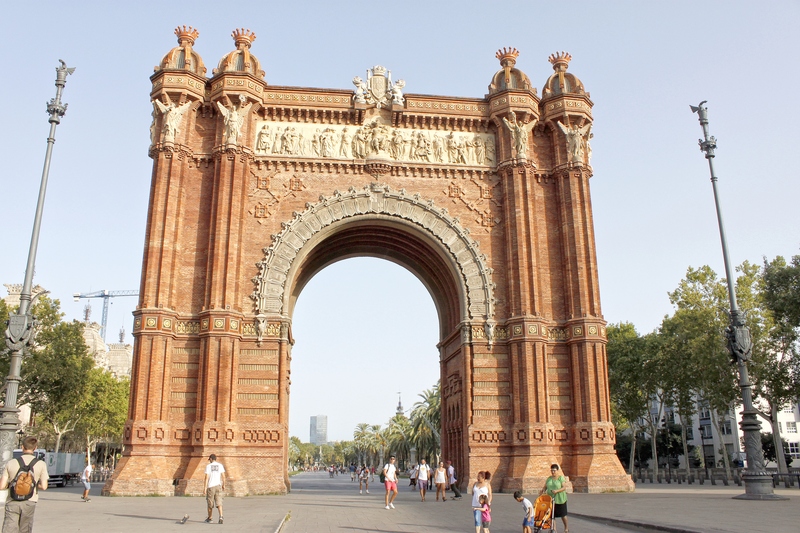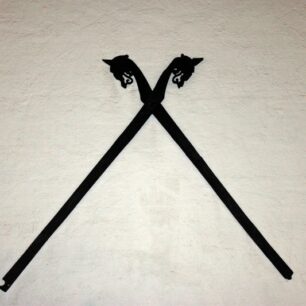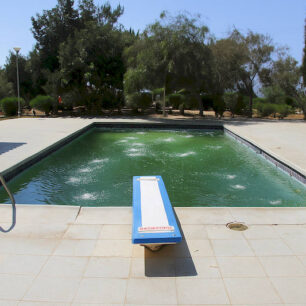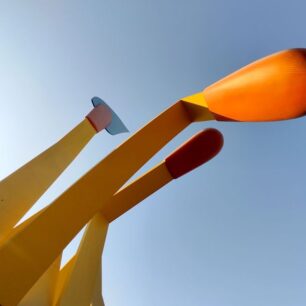There I was, strolling down the broad promenade of the Passeig de Lluís Companys until I reached the red-brick arch rising ahead of me: the Arc de Triomf. At first glance it looks like a classic triumphal arch you’d expect in Paris or Rome, but it carries a very different story — one of peace, modernity, and welcome.
A Bit of History
The Arc de Triomf was built in 1888 as the main gate for the Barcelona Universal Exposition. Instead of celebrating military victory, it celebrated Barcelona opening itself to the world. The architect, Josep Vilaseca i Casanovas, designed it in a Neo-Mudéjar style (a Moorish-inspired decorative style popular in Spain at that time), built of reddish brickwork.
The arch stands at the border between the old city (Ciutat Vella) and the newer Eixample district, symbolising Barcelona’s jump into the modern age. Look closely and you’ll see some interesting details: the front frieze shows “Barcelona welcomes the nations,” and the other side has a frieze of “Recompense”, showing awards for participants of the fair. Above the arch are the coats of arms of all 49 Spanish provinces of the time, with Barcelona’s crest at the top.
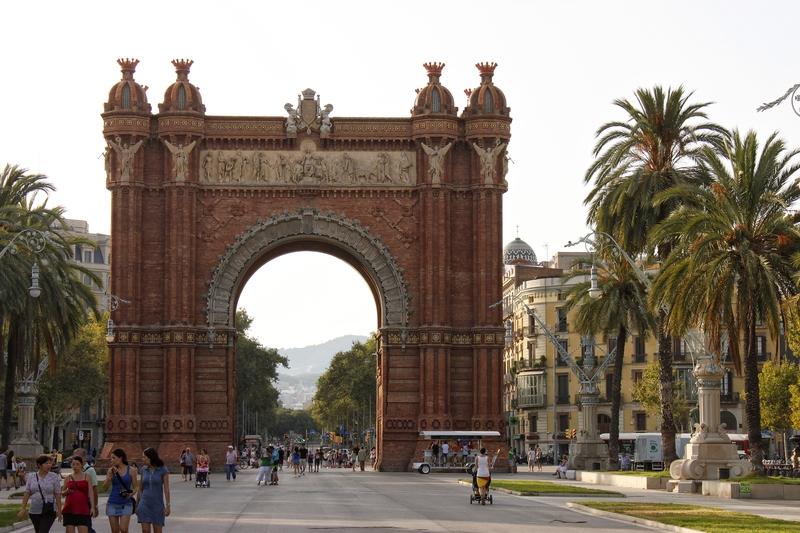
My Story & What It Felt Like
I walked under the arch, craning my neck up to take in the height — about 30 metres. It felt like stepping through a doorway between two eras: the ornate past and the living city of today. On one side, I could see the palms lining the Passeig; on the other, the broad path leading into the green of Parc de la Ciutadella. Street performers, scooter riders, families, and locals on benches all made this place feel alive — not just a monument.
I paused at a bench opposite the arch, sipping a quick coffee from a nearby café while watching the late-morning light hit the brick surface, giving it a warm glow. If you time it right, the sunlight makes the sculptures and reliefs really pop.
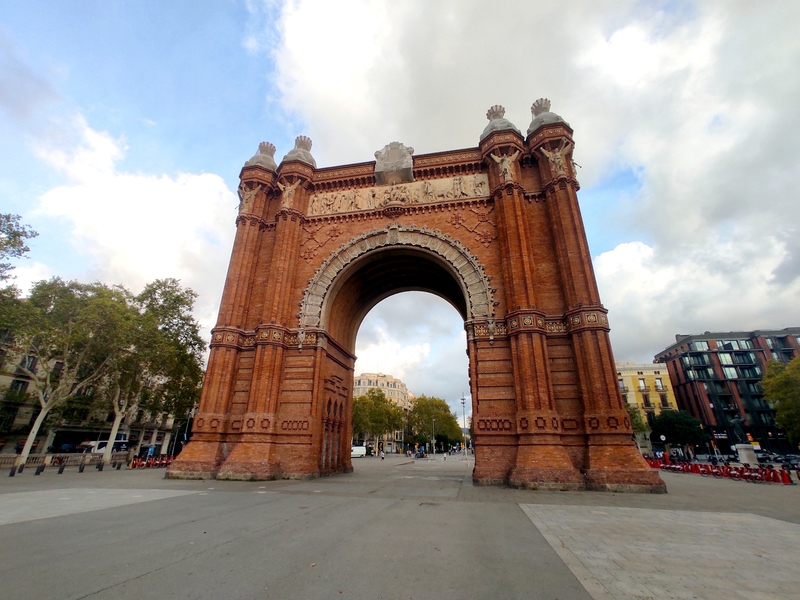
How to Get There & Practical Travel Tips
Transport:
- Metro: Take the L1 (red line) to the “Arc de Triomf” station.
- Bus: Several city buses stop near the monument (lines 19, 39, 40, 42).
- Walking: If you are staying near Plaça de Catalunya, you can reach the arch in about 10–15 minutes through central streets.
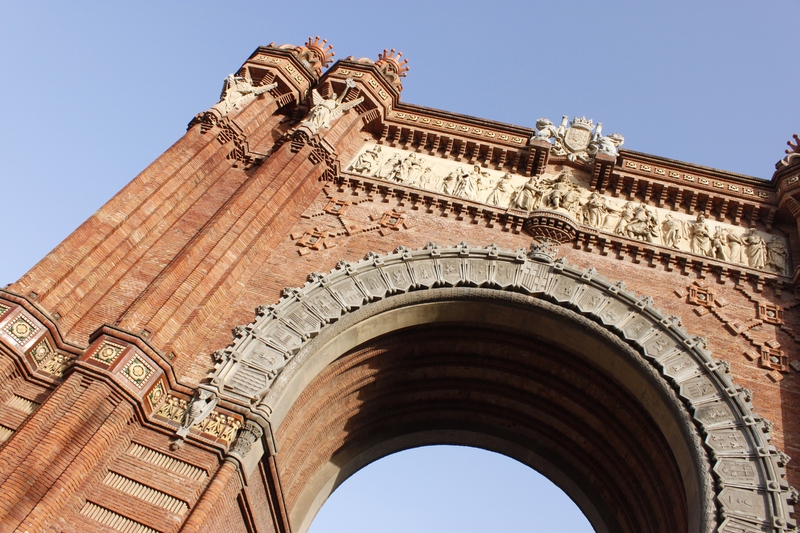
Costs & Entry:
- There is no entry fee — it’s a public monument.
- Nearby cafés and street food: ~€3–5 for coffee, €10–15 for a meal.
- Public transport single ride ticket in Barcelona: ~€2.40 (check latest fare).
Best Time to Visit & Photo Tips:
- Early morning (before 9 AM) is quieter and perfect for photography.
- Golden hour (just before sunset) gives beautiful light on the west side of the arch.
- For the best framing: stand slightly off-centre to align the arch with the promenade’s palms.
Hidden Gem Tip:
- Walk straight into Parc de la Ciutadella after visiting the arch. The contrast of the old fairgrounds, fountain, shady trees, and locals relaxing gives you a full experience of this “gateway” zone.
- Spot the small bats carved in stone on the pillars of the arch — a medieval symbol linked to King Jaume I that many visitors miss.

Food & Nearby Places to Relax
Just a short walk from the arch you’ll find lively cafés and tapas bars in the Sant Pere/Born neighbourhood. Stop for a fresh bocadillo (sandwich) or patatas bravas and a local beer or a glass of cava. If you like ice cream, visit a gelateria near El Born district and sit on the benches by the promenade, watching the world go by.
Interesting Curiosities
- Unlike many triumphal arches built to commemorate battles or kings, Barcelona’s Arc de Triomf is civil: built to welcome nations, not conquer them.
- The arch was part of the 1888 World Fair, which brought 2.3 million visitors and helped modernize Barcelona.
- The bat symbols carved into the arch’s pillars are tied to King Jaume I — a small detail many miss.
- The broad promenade in front of the arch is often used today for rollerbladers, street performers, festivals, and relaxing strolls.
Useful Tips for Your Visit
- Be aware of pick-pockets, as in many major cities, and keep valuables safe.
- If visiting in the evening, the arch is beautifully illuminated after dark.
- Combine your visit with Parc de la Ciutadella and the Born district.
- A few Catalan or Spanish phrases can enhance your experience.

Why It’s Worth It
If you’re visiting Barcelona and want something less crowded than the cathedral or Gaudí houses, the Arc de Triomf offers history, easy access, nice surroundings, and an authentic local feel. It’s a landmark that blends old and new, architecture and pedestrian life, giving both “photo moment” and “pause for a while” moment.
So next time you’re in Barcelona: stroll, breathe, look up at the brickwork, see the carvings, wander into the park behind it, pick a café, and just soak in the atmosphere.
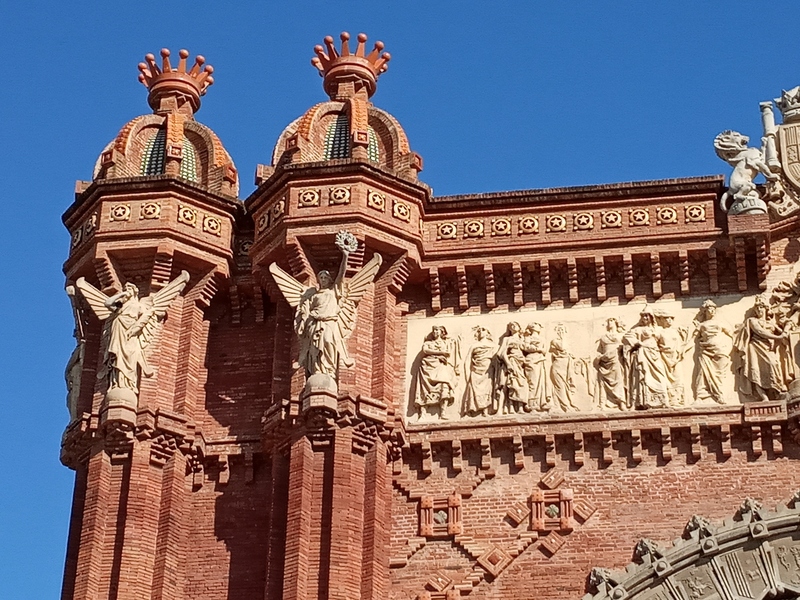
Travel far, feel deeply, live fully.


